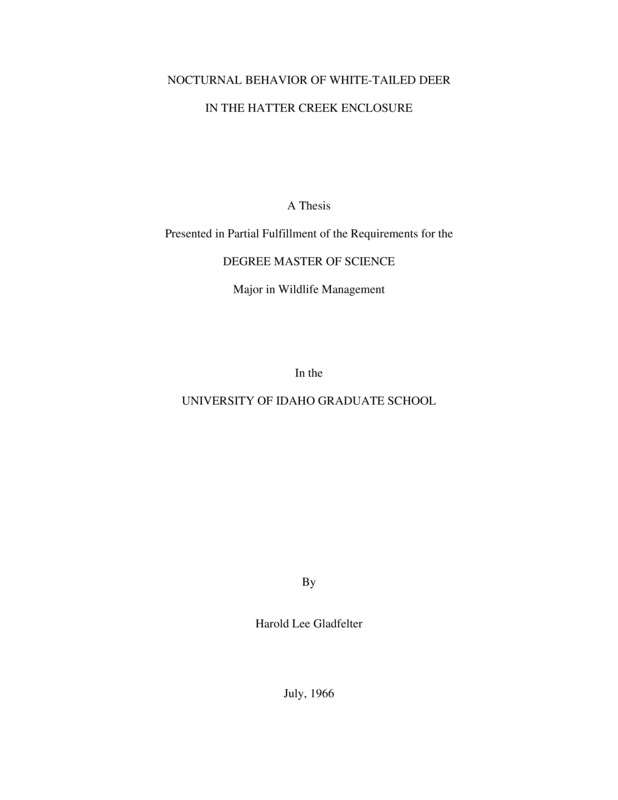PDF PREVIEW
Nocturnal Behavior of White-Tailed Deer in the Hatter Creek Enclosure Item Info
- Title:
- Nocturnal Behavior of White-Tailed Deer in the Hatter Creek Enclosure
- Creator:
- Gladfelter, Harold Lee
- Date Created:
- 1966-07
- Description:
- The nocturnal behavior of white-tailed deer was studied in the 800-acre Hatter Creek deer enclosure in northern Idaho. Techniques used for locating and observing the deer at night were small neon blinkers and sheep bells which had been attached to collars on captured deer, an infrared sniperscope, electronic counting devices used for movement studies, and observation perches used for direct observation of behavior. The nocturnal movement of deer was greater in the evening than in the morning and was related to change in light intensity after sunset and before sunrise. The length of the nocturnal activity periods was related to decreases in temperature and increases in humidity. Nocturnal feeding activity decreased from summer to winter and was accompanied by decreasing monthly mean temperatures. The bedding activity increased from summer to winter with bedding activity in the winter occurring the greater part of the night. However, bedding periods were interrupted with short feeding periods.
- Document Type:
- Thesis
- Library Call Number:
- SK301.G54 1966
- Subjects:
- Hatter Creek enclosure East Hatter Creek white-tailed deer nocturnality of deer nocturnal behavior wildlife
- UIEF Unit:
- East Hatter Creek
- Location:
- UIEF; East Hatter Creek
- Latitude:
- 46.837171
- Longitude:
- -116.802814
- Department:
- Department of Wildlife Resources
- Type:
- Text
- Format:
- application/pdf
Source
- Preferred Citation:
- "Nocturnal Behavior of White-Tailed Deer in the Hatter Creek Enclosure", UIEF Research Exchange, University of Idaho Library Digital Collections, https://www.lib.uidaho.edu/digital/uief/items/uief_0118.html
Rights
- Rights:
- In copyright, educational use permitted.
- Standardized Rights:
- http://rightsstatements.org/vocab/InC-EDU/1.0/

